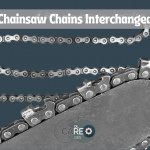Quick Overview of This Article
Maintain a wood chipper by regularly checking the chip quality, inspecting and replacing knives, repacking bearings, and performing radiator and grease maintenance. These steps will help ensure proper functioning and extend the lifespan of your wood chipper.
Wood chippers are valuable machines for clearing out branches and debris, but they require regular maintenance to perform their best. By following a few simple steps, you can keep your wood chipper in good working condition for years to come.
This article will provide an overview of how to maintain a wood chipper, including checking the chip quality, inspecting and replacing knives, repacking bearings, and performing radiator and grease maintenance. By taking the time to properly care for your wood chipper, you can ensure its longevity and optimize its performance.
Regular Cleaning And Inspection
To maintain a wood chipper, regular cleaning and inspection are crucial. Clearing debris, draining oil, checking the air filter and spark plug, and following the recommended maintenance procedures will ensure the chipper’s optimal performance and longevity.
Maintaining a wood chipper is crucial to ensure its optimal performance and longevity. One of the key aspects of maintenance is regular cleaning and inspection. By following these steps, you can keep your wood chipper in top shape:
Clear The Debris:
- Clearing the debris from your wood chipper is essential to prevent clogs and malfunctions. Remove any remaining wood chips, branches, leaves, or other debris from the chipper’s hopper, chute, and blades.
- Ensure there are no obstructions that could hinder the chipper’s operation.
Check For Any Foreign Objects:
- Before each use, carefully inspect the wood chipper for any foreign objects that might have inadvertently entered the machine. These objects can cause damage or compromise the chipper’s performance.
- Remove any rocks, metal pieces, or other debris that should not be in contact with the chipper’s blades.
Inspect Blades For Damage Or Dullness:
- Regularly inspect the blades for any signs of damage or dullness. Damaged or dull blades can decrease the chipper’s efficiency and may pose safety hazards.
- If you notice any nicks, cracks, or chips on the blades, it is crucial to replace them promptly.
- Dull blades can be sharpened using a grinder or replaced if necessary.
By following these regular cleaning and inspection steps, you can ensure that your wood chipper operates efficiently and effectively. Remember to consult the manufacturer’s manual for specific instructions on cleaning and maintaining your wood chipper.

Lubrication And Greasing
To maintain a wood chipper, it is essential to regularly lubricate and grease the machine. This includes greasing the chipper drum bearing housings, as well as the feed wheel bearings. Following the manufacturer’s instructions and performing these maintenance tasks can help ensure the longevity and efficient performance of your wood chipper.
Lubricate Moving Parts Regularly
Regular lubrication is essential for maintaining the performance and longevity of your wood chipper. It helps reduce friction and keeps the moving parts running smoothly. Here’s how you can lubricate the moving parts of your wood chipper:
- Refer to the product manual to determine the specific lubrication points and intervals recommended by the manufacturer.
- Use a high-quality lubricant, such as machine oil or grease, that is suitable for the specific components of your wood chipper.
Apply lubricant to the following moving parts:
- Chipper blades: Lubricate the chipper blades regularly to prevent rust and ensure optimal cutting performance. Apply a thin layer of lubricant to the blade edges using a brush or cloth.
- Belt drive system: If your wood chipper has a belt drive system, check the condition of the belts and lubricate them if necessary. Follow the manufacturer’s instructions for belt maintenance.
- Chute: Lubricate the chute where the wood chips are discharged to prevent clogs and ensure smooth chip flow. Apply lubricant to the chute walls and hinges.
Grease The Chipper Drum Bearing House
The chipper drum bearing housings play a crucial role in the operation of your wood chipper. Proper greasing of these bearings ensures smooth rotation of the chipper drum and prevents premature wear and tear. Follow these steps to grease the chipper drum bearing housings:
- Locate the chipper drum bearing housings on your wood chipper. Refer to the product manual for their exact location.
- Clean any dirt or debris from the bearing housing before applying grease. Use a cloth or brush to remove any buildup.
- Apply a sufficient amount of high-quality grease to the bearing housing. Make sure the grease is compatible with the specific bearing type.
- Rotate the chipper drum manually to distribute the grease evenly inside the bearing housing.
- Check the grease level periodically and add more grease if necessary. Follow the manufacturer’s recommendations for grease type and intervals.
Grease The Feed Wheel Bearings
The feed wheel bearings in your wood chipper play a crucial role in pulling the wood into the cutting mechanism. Proper greasing of these bearings ensures smooth operation and prevents the feed wheel from seizing up. Follow these steps to grease the feed wheel bearings:
- Locate the feed wheel bearings on your wood chipper. Refer to the product manual for their exact location.
- Clean any dirt or debris from the bearing before applying grease. Use a cloth or brush to remove any buildup.
- Apply a sufficient amount of high-quality grease to the bearing. Make sure the grease is compatible with the specific bearing type.
- Rotate the feed wheel manually to distribute the grease evenly inside the bearing.
- Check the grease level periodically and add more if necessary. Follow the manufacturer’s recommendations for grease type and intervals.
Remember to consult the product manual for specific instructions on lubrication and greasing for your wood chipper model. Regular maintenance and lubrication will help keep your wood chipper in optimal condition for efficient and reliable operation.
Blade Maintenance And Replacement
To maintain a wood chipper, it is important to regularly inspect and replace the blades. This helps ensure optimal performance and prolongs the lifespan of the machine. Additionally, following the manufacturer’s maintenance schedule, cleaning the chipper regularly, and keeping the engine well-lubricated are key steps in maintaining a wood chipper.
Inspect, Sharpen, or Replace Blade Knives:
- Regularly inspect the blade knives of your wood chipper for any signs of wear or damage.
- Look for chips, cracks, or dullness in the blades, as these can affect the chipper’s performance.
- If the blades are in good condition but have become dull, sharpen them using a sharpening stone or grinder.
- However, if the blades are worn beyond repair or are damaged, it is recommended to replace them with new ones.
- Always refer to your wood chipper’s manual for specific instructions on blade maintenance and replacement.
Check for Proper Blade Alignment:
- Proper blade alignment is essential for the efficient operation of your wood chipper.
- Make sure that the blades are correctly aligned with each other and the feed chute.
- Misalignment can lead to poor chip quality, jamming, and even damage to the chipper.
- Use a straight edge or ruler to check the alignment of the blades.
- If there is any misalignment, adjust the blade mounting bolts as per the manufacturer’s instructions.
Replace Worn or Damaged Blades:
- Over time, the blades of your wood chipper will wear down due to regular use.
- It’s crucial to replace worn or damaged blades promptly to maintain optimal chipper performance.
- Inspect the blades carefully for signs of wear, such as thinning or chipping.
- Any blades that are beyond their useful life should be replaced with new ones.
- Ensure that the replacement blades are the correct size and type recommended by the chipper’s manufacturer.
- Always follow the manufacturer’s instructions when replacing the blades to ensure proper installation.
Remember to prioritize safety while performing blade maintenance and replacement. Always wear gloves and safety goggles to protect yourself from potential injuries. Finally, regular maintenance and inspection will keep your wood chipper in good working condition and extend its lifespan.
Frequently Asked Questions
How Do You Service A Wood Chipper?
To service a wood chipper, follow these steps:
- Clear debris from the chipper.
- Drain the oil.
- Check the air filter.
- Inspect the spark plug.
- Complete the oil change.
How Do You Maintain A Chipper Shredder?
To maintain a chipper shredder, follow these steps:
- Clear debris from inside and wipe down the exterior after each use.
- Change the engine oil after the first 8 hours of operation.
- Keep the control linkage clean to prevent malfunctions.
- Use light machine oil for lubrication.
How Often Do You Grease A Chipper?
Grease the chipper according to the manufacturer’s recommended maintenance schedule.
How Often Do You Sharpen Wood Chipper Blades?
Wood chipper blades should be sharpened regularly for optimal performance. Ideally, blades should be sharpened every 10-15 hours of use.
Conclusion
Proper maintenance is essential for keeping your wood chipper in optimal condition. By following the recommended maintenance procedures, you can ensure that your chipper operates efficiently and lasts for many years to come. Start by clearing any debris from the chipper after each use and allowing the engine to cool before wiping down the exterior.
Regularly check and replace the oil, air filter, and spark plug to keep the engine running smoothly. Keep the control linkage clean and lubricate it with light machine oil to prevent any malfunctions. Following a regular maintenance schedule outlined in the product manual will help you identify and address any potential issues before they become major problems.
With just a little effort and attention, you can maintain your wood chipper effectively and enjoy its full benefits for a long time.




